Beth Tabler's Blog, page 206
January 1, 2022
An Interview With Benedict Jacka, Author of the Alex Verus series
 Benedict Jacka "...The biggest difference is that I’m a lot pickier now. Back when I wrote the first few Alex Verus books, I tended to write off the top of my head and make things up on the spot. I still do that sometimes, but nowadays I’m a lot more likely to go back and edit it quite heavily before sending it to my publisher....."
Benedict Jacka "...The biggest difference is that I’m a lot pickier now. Back when I wrote the first few Alex Verus books, I tended to write off the top of my head and make things up on the spot. I still do that sometimes, but nowadays I’m a lot more likely to go back and edit it quite heavily before sending it to my publisher....." When you talk about great urban fantasy, you have a lot of choices as a reader. It could even be said that we live in a golden age of options. However, many series start well but don’t have the longevity to last eight or even 15 books, unlike the Alex Verus series by Benedict Jacka. Jacka’s series has always been one I turned to when I was looking for a fun pick-me-up of a read with a dark edge. As the series plowed on, the titular character got darker and morally divided due to the political machinations of magic users.
On December 7th, Jacka released the final Alex Verus book with Risen and has ended the decade-long series with a bang. It was quite the page-turner and an excellent farewell to the Verus world. Jacka was kind enough to sit down and answer some questions about his writing, the Alex Verus series, and what we have as readers to look forward to in the future from his future storytelling.
[BWG] You have a huge new release with book 12 of Alex Verus. I could not put it down and read it in one day. Could you tell us a bit about the Alex Verus series in general and where we are at the start of Risen?
Books 10/11/12 are the “endgame trilogy” of the Alex Verus series. By the beginning of Risen, all of Alex’s big decisions have been made and the battle lines have been drawn. Risen is all about playing out the consequences of the choices he made back in book #10.
[BWG] You have a bachelor’s degree from Cambridge University in Philosophy. What made you choose philosophy as a degree tract? Did it have any impact on how you created Alex’s character?
I always had a particular interest in ethics. I don’t know if it had much impact on Alex’s character, but it definitely had a big impact on his story—much of the series is about the intersection of power and morality, and the conflicts between them. The mechanics of Alex’s divination also draw on the philosophical arguments involving free will and determinism that I used to write essays about.
[BWG] You write as someone who appreciates stories from a reader’s perspective. Are you a big reader, and if so, what stories inspired you as a writer?
I’m a very big reader—I spent pretty much my entire childhood reading! I’m not sure which books inspired me in particular, but my favourites growing up were Lord of the Rings and Watership Down.
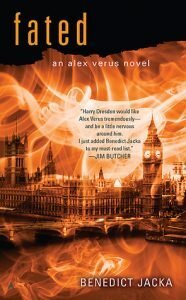 [BWG] It is coming up on ten years since you released Fated, book 1 of Alex Verus. Has your approach to the writing and editing process changed since the first release?
[BWG] It is coming up on ten years since you released Fated, book 1 of Alex Verus. Has your approach to the writing and editing process changed since the first release?
The biggest difference is that I’m a lot pickier now. Back when I wrote the first few Alex Verus books, I tended to write off the top of my head and make things up on the spot. I still do that sometimes, but nowadays I’m a lot more likely to go back and edit it quite heavily before sending it to my publisher.
[BWG] One of the best qualities of the Alex Verus series is the creation of deep familial relationships; it is the epitome of a found family. These relationships prove to be just as crucial in keeping Alex alive as his raw power as a mage. Was it always going to be Variam, Luna, and Anne? Were there any characters that could have been a part of Alex’s inner circle, but it didn’t work as the series progressed?
Luna was (almost) always going to be part of Alex’s inner circle, but that’s not at all true for Variam and Anne—they were experimental characters that I brought in for Book #3 and ended up keeping around because I liked them. Other candidates for Alex’s inner circle were Sonder and Caldera—back when I introduced them in books #1 and #4 respectively, I thought there was a good chance they’d be sticking around with Alex for the long haul. Obviously things didn’t quite work out that way.
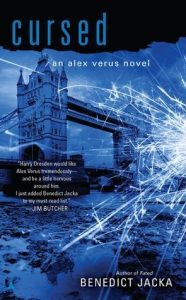 [BWG] Aside from Alex, which character did you find most challenging to write?
[BWG] Aside from Alex, which character did you find most challenging to write?
I always found Alex pretty easy. In books #1 and #2 the one I had most trouble with was Luna, but around the beginning of book #3 something clicked and from then I really enjoyed writing her scenes. From that point on, the one who was most difficult was probably Anne.
[BWG] I read an AMA on R/Fantasy where someone asked you about Arachne’s personality. You stated that “I’m honestly not sure where Arachne’s personality came from. Fated was a very experimental novel in a lot of ways, and some of the things in there were ones I just threw up completely off the top of my head. Arachne was one of those!” Did Starbreeze and Hermes have similar beginnings?
Hard to remember at this point, but I think so, yes. Starbreeze was a completely random out-of-nowhere creation. Hermes came about because I like foxes, and I like blink dogs (a fairly obscure monster from Dungeons & Dragons) and thought it would be fun to merge the two together.
[BWG] You write highly choreographed fight scenes, and it is evident to any reader the love and care you put into them. What is your process like for their creation? Do you hold everything in your head, or do you have to sketch everything out?
I hold it all in my head. I spend a lot of time on martial arts and strategy games, so I find that kind of thing pretty intuitive.
[BWG] Marked felt like we entered the end game. Either Alex would be strong enough to fight the end boss, or he was going to die. Was there an “a-ha” scene where you felt like this was the beginning of the end?
The big turning point for me was in book #10, Fallen, where Alex goes back into the same bubble realm that he first visited in Fated, and he’s about to pick up with fateweaver. It’s a short scene and not very flashy, but it’s the last time in the series that you see the “old” Alex.
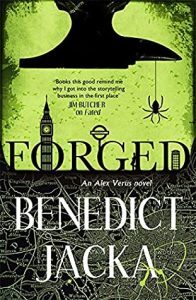 [BWG] Are there any plot points that you put into the first books that, at the time, were one-off details but that you were able to build upon as the series progressed? And conversely, are there any ideas that you were going to build upon but ended up leaving them as is.
[BWG] Are there any plot points that you put into the first books that, at the time, were one-off details but that you were able to build upon as the series progressed? And conversely, are there any ideas that you were going to build upon but ended up leaving them as is.
Ones that were originally one-offs but which became important later—the fateweaver from Fated and the monkey’s paw from Cursed are the big ones. I don’t know if there were any plot points that got abandoned, but there were definitely quite a few characters that ended up mostly sidelined because I realized I didn’t enjoy writing them very much, although a lot of them still ended up coming back anyway ( such as Meredith).
[BWG] Was the setting for Alex Verus always London/Camden area?
No, most of the events of Fated were originally set in a fantasy world. My first editor from Orbit UK read an early draft and convinced me that the story would work better as an urban fantasy instead.
[BWG] What was your favorite scene to write of the series?
Probably either Alex’s fight against Onyx and his gang in Fallen, or Alex’s final negotiation with the Council at the end of Forged. I’d been building up to them both for a long time.
[BWG] Alex’s nature becomes increasingly evident in Risen. Instead of characters being black or white, good or evil, it is very apparent that people are shades of gray. Was it great to let go a bit and let Alex dive into his nature’s darker and more ruthless parts?
I did find it satisfying to have Alex cut loose a bit. I’d spent a long time laying the groundwork for it so that it felt earned!
[GdM] Are there any plans for releasing a graphic novel adaptation of the series?
Not at the moment. I’m not sure how well the series would work as a graphic adaptation—so many of the scenes either depend on movement or thought/narration.
[BWG] You have worked with Gildart Jackson repeatedly for the audio adaptions of the series. Did you have any input into whom was selected to voice Alex’s character? Jackson seems like the perfect embodiment of Alex.
The audio adaption was actually done completely by the audio company—I had pretty much no input at all!
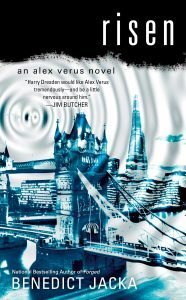 [BWG] You have talked about being excited to work on something new. Do you have any ideas on the horizon you can talk about? Are you taking a break for a bit before starting on the next project?
[BWG] You have talked about being excited to work on something new. Do you have any ideas on the horizon you can talk about? Are you taking a break for a bit before starting on the next project?
I took a brief break at the start of the year, and wrote an Alex Verus novella called Favours, but since then I’ve spent most of my time working on the first book in what’s going to be a new urban fantasy series—I’d actually hoped to have it finished by now, but after getting some feedback from my UK editor I decided to rewrite some elements of it first (it’s a lot easier to fix structural problems if you catch them early). The book’s about 80% done at the moment, and my current plan is to finish the rewrite in December, then hopefully get the last 20% done in January. Publishers take a long time to put things out, thought, so it isn’t likely to be released before early 2022. Hopefully my readers will enjoy Risen enough that when the new series finally comes out, they’ll want to read that too!
The original interview appeared in Grimdark Magazine
Check Out Some Of Our Other interviewsInterview – Kristyn Merbeth Author of the Nova Vita Protocol
Interview – Author Grady Hendrix
December 30, 2021
Ben from Literature & Lofi’s Favorite Books From 2021
Here we are again, talking about favorites from 2021. This time, the best of list comes from Ben from Literature & Lofi, one of my favorite booktube channels. If you aren’t following Ben, you really should be. He puts out detailed and thoughtful content weekly and is a very active member of the reading community on Twitter. He also has exceptional taste in books and a real love of SFF. Something that comes across in every review or conversation he has about reading.
Check Out His List!
Favorite Books of 2021 Fires of Vengeance - Evan Winter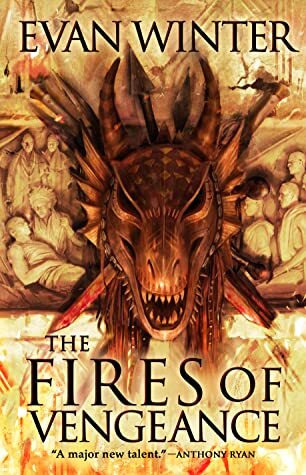 Pick Up Your Copy Here
Pick Up Your Copy Here Winter delivers yet again! Immerse yourself in a fast paced rushing flurry of emotions and action. The story is getting more serious and even darker with major repercussions for Tau, our main protagonist.
What it is about?Desperate to delay an impending attack by the indigenous people of Xidda, Tau and his queen craft a dangerous plan. If Tau succeeds, the queen will have the time she needs to assemble her forces and launch an all-out assault on her own capital city, where her sister is being propped up as the ‘true’ Queen of the Omehi.
If the city can be taken, if Tsiora can reclaim her throne and reunite her people, then the Omehi might have a chance to survive the coming onslaught.
We Men of Ash and Shadow - Holly Tinsley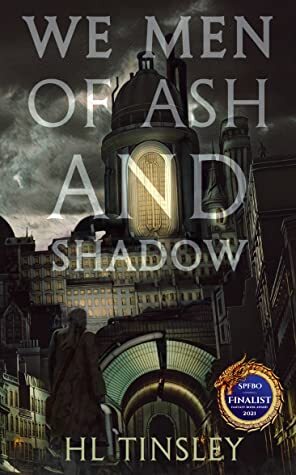 Pick Up Your Copy Here
Pick Up Your Copy Here The book that has successfully captivated my interest in the grimdark genre. Expect witty dialogue and constant street-brawling drama between some of the most gripping characters I’ve EVER read!
What it is about?Amidst the gas lamp shadows former soldier-turned-mercenary John Vanguard hunts criminals at the behest of his corrupt employer, Captain Felix Sanquain.
Shamed by his deserter past and seeking to make amends for his many misdeeds, a chance encounter with Tarryn Leersac – a skilled young would-be-assassin fallen from the graces of high society – leads Vanguard to become an unlikely mentor.
Charged with hunting down the killer of two guards left washed up on the banks of the canal, the further Vanguard delves into the underbelly of the city the more he finds himself entangled in a web of secrets and lies.
A prominent aristocrat is missing. Crime lords, con men and harlots run amok and the city teeters on the brink of another revolution.
With his already precarious reputation hanging by a thread, Vanguard must piece together how and why the last war came to pass, find a way to earn redemption for his mistakes and come to terms with the past in a city where few survive, and even fewer can be trusted.
A Grimdark novel with elements of adventure and gaslight fantasy, ‘We Men of Ash and Shadow’ explores themes of redemption, loyalty, and betrayal against the backdrop of a world where survival often means compromising your values.
‘We Men of Ash and Shadow’ is an adult fantasy novel and as such, contains adult themes and language.
Legacy of the Brightwash - Krystle Matar Pick Up Your Copy Here
Pick Up Your Copy Here Speaking of sensational character work, Legacy of the Brightwash does a superb job at exploring the intricacies and dilemmas individuals face but in an incredibly intimate and engrossing manner. The exceptional world building isn’t to be discounted either.
What it is about?Follow the law and you’ll stay safe. But what if the law is wrong?
Tashué’s faith in the law is beginning to crack.
Three years ago, he stood by when the Authority condemned Jason to the brutality of the Rift for non-compliance.
When Tashué’s son refused to register as tainted, the laws had to be upheld. He’d never doubted his job as a Regulation Officer before, but three years of watching your son wither away can break down even the strongest convictions.
Then a dead girl washed up on the bank of the Brightwash, tattooed and mutilated. Where had she come from? Who would tattoo a child? Was it the same person who killed her?
Why was he the only one who cared?
Will Tashué be able to stand against everything he thought he believed in to get the answers he’s looking for?
Seasons of Albadone - Christopher Warman & Élan Marché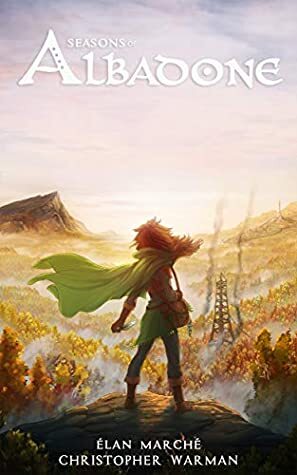 Pick Up Your Copy Here
Pick Up Your Copy Here Now this is a book that is absolutely charming. The world is enchanting. The character arcs and stories are unbelievably poignant and meaningful. The Seasons of Albadone is definitely a book that will take you completely by surprise. It’s a breath of fresh air and a very sessionable read.
What it is about?Four seasons.
Four stories.
An aspiring enchantress searching for a way to lift a terrible curse.
A drunken father makes a dangerous wish.
A foreman tilting the balance between nature and progress.
A mother traveling with her dying child in search of a healer.
Four paths merge.
Four destinies intertwine.
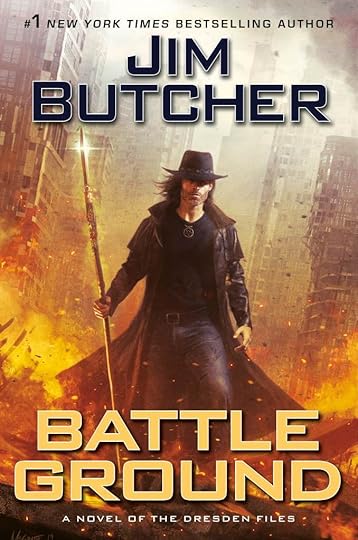 Pick Up Your Copy Here
Pick Up Your Copy Here This is a landmark book for the series where once again the playing field is changing. We watch our favourite wise-cracking, supernatural delving, detective-turned-wizard, face off against unsurmountable odds. It’s both cathartic and terrifying at the same time!
What it is about?Harry has faced terrible odds before. He has a long history of fighting enemies above his weight class. The Red Court of vampires. The fallen angels of the Order of the Blackened Denarius. The Outsiders.
But this time it’s different. A being more powerful and dangerous on an order of magnitude beyond what the world has seen in a millennium is coming.
And she’s bringing an army. The Last Titan has declared war on the city of Chicago, and has come to subjugate humanity, obliterating any who stand in her way.
Harry’s mission is simple but impossible: Save the city by killing a Titan. And the attempt will change Harry’s life, Chicago, and the mortal world forever.
Kings of Paradise - Richard Nell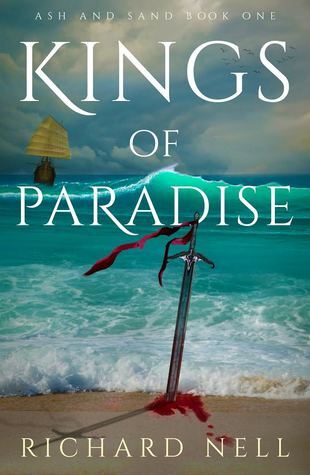 Pick Up Your Copy Here
Pick Up Your Copy Here How could I not mention Nell’s Kings of Paradise? A self-published grimdark which has left me with a taste for more in the genre. Masterfully written, this book will toy at your emotions and tug at your heartstrings in the best possible way!
What it is about?A deformed genius plots vengeance while struggling to survive. A wastrel prince comes of age, finding a power he never imagined. Two worlds are destined to collide.
Only one can be king.
Ruka, called a demon at birth, is a genius. Born malformed and ugly into the snow-covered wasteland of the Ascom, he was spared from death by his mother’s love. Now he is an outcast, consumed with hate for those who’ve wronged him. But to take his vengeance, he must first survive. Across a vast sea in the white-sand island paradise of Sri Kon, Kale is fourth and youngest son of the Sorcerer King.
And at sixteen, Kale is a disappointment. As the first prince ever forced to serve with low-born marines, Kale must prove himself and become a man, or else lose all chance of a worthy future, and any hope to win the love of his life. Though they do not know it, both boys are on the cusp of discovery. Their worlds and lives are destined for greatness, or ruin.
But in a changing world where ash meets paradise, only one man can be king… The first installment of an epic, low- fantasy trilogy. Kings of Paradise is a dark, bloody, coming-of-age story shaped by culture, politics, and magic.
Pawns Gambit - Rob J Hayes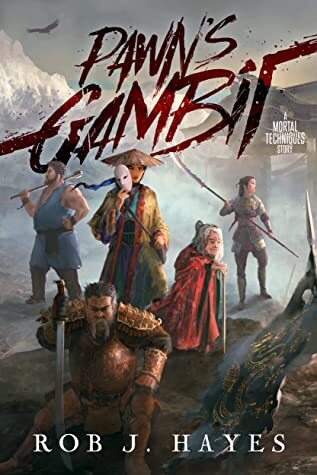 Pick Up Your Copy Here
Pick Up Your Copy Here A real knockout follow up from the already well loved Never Die book. Hayes expands on the characters, history and the eastern fantasy lorr for the works that this story is set in. Yet again, this book defies to disappoint with character arcs that are so rewarding to watch develop and unfold.
What it is about?The Mortal Techniques novels are a series of stand-alone stories that can be read entirely independently, set in the award-winning Mortal Techniques universe.
Merciless gods, vengeful spirits, immortal assassins, and empires at war collide.
Five years ago, Yuu made a mistake that cost her everything. Once a renowned strategist and general, now she is on the run, royal bounty hunters snapping at her heels. But what if there was a way to get back what she lost, a way to bring back a murdered prince?
Once a century, the gods hold a contest to choose who will rule from the Jade Throne. Each god chooses a mortal champion, and the fate of heaven and earth hangs in the balance.
On a battlefield full of heroes, warriors, assassins, and thieves can Yuu survive long enough to learn the rules of the game, let alone master it?
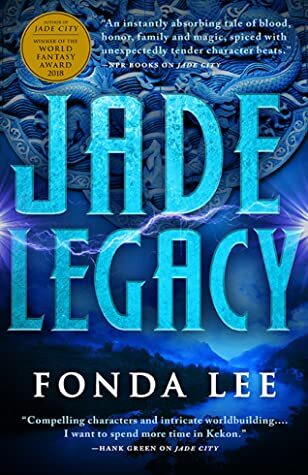 Pick Up Your Copy Here
Pick Up Your Copy Here An epic conclusion to an urban fantasy series that I can’t help but love. We watch the conspiring between rival family clans come to a head in a way I could never have percieved coming. It’s an emotionally devastating bow out to so many characters that I’ve bonded with and watched both grow and sabotage their aspirations.
What it is about?Jade, the mysterious and magical substance once exclusive to the Green Bone warriors of Kekon, is now known and coveted throughout the world. Everyone wants access to the supernatural abilities it provides, from traditional forces such as governments, mercenaries, and criminal kingpins, to modern players, including doctors, athletes, and movie studios.
As the struggle over the control of jade grows ever larger and more deadly, the Kaul family, and the ancient ways of the Kekonese Green Bones, will never be the same.
The Kauls have been battered by war and tragedy. They are plagued by resentments and old wounds as their adversaries are on the ascent and their country is riven by dangerous factions and foreign interference that could destroy the Green Bone way of life altogether. As a new generation arises, the clan’s growing empire is in danger of coming apart.
The clan must discern allies from enemies, set aside aside bloody rivalries, and make terrible sacrifices… but even the unbreakable bonds of blood and loyalty may not be enough to ensure the survival of the Green Bone clans and the nation they are sworn to protect.
December 28, 2021
Brianna’s Favorite Books From 2021
We have another favorite books list, this time from reviewer Brianna Sinder.
Check out some of her reviews:
Short Story Review – Metal Like Blood in the Dark by T. Kingfisher
Short Story Review – A Guide to Working Breeds by Vina Jie-Min Prasad
Short Story Review – The Mermaid Astronaut by Yoon Ha Lee
This last year was a great year for SFF, and with our team, we all have hugely different preferences, which makes our team all the richer.
Check out her picks for best of books!
The Binti: The Complete Trilogy – Nnedi Okorafor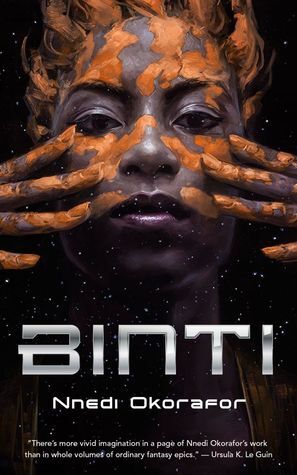 Pick Up Your Copy Here
Pick Up Your Copy Here Binti is pulled in so many directions, who she wants to be, who her family wants her to be, who her people need her to be and who she is. All these different facets are part of who she really is; all of them change her and push her to be something greater than anyone can imagine. I highly recommend the audiobook performance.
What it is about?For the first time in hardcover, the winner of the Hugo Award and the Nebula Award!
With a new foreword by N. K. Jemisin
Her name is Binti, and she is the first of the Himba people ever to be offered a place at Oomza University, the finest institution of higher learning in the galaxy. But to accept the offer will mean giving up her place in her family to travel between the stars among strangers who do not share her ways or respect her customs.
Knowledge comes at a cost, one that Binti is willing to pay, but her journey will not be easy. The world she seeks to enter has long warred with the Meduse, an alien race that has become the stuff of nightmares. Oomza University has wronged the Meduse, and Binti’s stellar travel will bring her within their deadly reach.
If Binti hopes to survive the legacy of a war not of her making, she will need both the the gifts of her people and the wisdom enshrined within the University, itself — but first she has to make it there, alive.
The Binti Series
Book 1: Binti
Book 2: Binti: Home
Book 3: Binti: The Night Masquerade
 Pick Up Your Copy Here
Pick Up Your Copy Here Tashué Blackwood walks through life refusing to let himself experience it fully. Stella carries a secret to protect her daughter, and it just might kill her. Ilia is exhausted by failing Miss-Perfect-Trophy-Wife. Lorne wants to protect the people he loves, but he has to actually make it somewhere first. All these people suffer through a world that demands broken hearts, and they pull you along for the delicious ride
Check out Bri’s review of Legacy of the Brightwash by Krystle Matar
What it is about?Follow the law and you’ll stay safe. But what if the law is wrong?
Tashué’s faith in the law is beginning to crack.
Three years ago, he stood by when the Authority condemned Jason to the brutality of the Rift for non-compliance. When Tashué’s son refused to register as tainted, the laws had to be upheld. He’d never doubted his job as a Regulation Officer before, but three years of watching your son wither away can break down even the strongest convictions.
Then a dead girl washed up on the bank of the Brightwash, tattooed and mutilated. Where had she come from? Who would tattoo a child? Was it the same person who killed her?
Why was he the only one who cared?
Will Tashué be able to stand against everything he thought he believed in to get the answers he’s looking for?
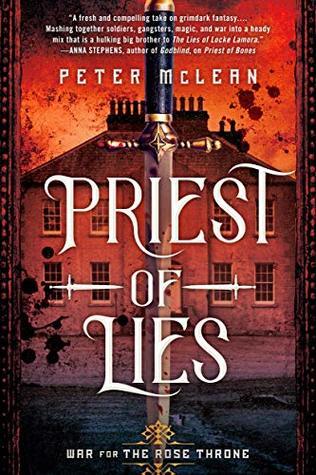 Pick Up Your Copy Here
Pick Up Your Copy Here Tomas Piety has no choice but to do the queen’s bidding. He has to balance that out with maintaining his territory, keeping the streets clean (as clean as they can be), raising his magical foster son, and keeping his wreck of a brother alive. He has to do it all while remembering who he is not, and that his supposed lover is her own person with her own plans.
What it is about?Tomas Piety has been many things: soldier, priest, gangster…and spy. As Tomas’s power grows, the nobility better watch their backs, in this dark and gritty epic fantasy series.
People are weak, and the poorer and more oppressed they are, the weaker they become–until they can’t take it anymore. And when they rise up…may the gods help their oppressors.
When Tomas Piety returned from the war, he just wanted to rebuild his empire of crime with his gang of Pious Men. But his past as a spy for the Queen’s Men drew him back in and brought him more power than he ever imagined.
Now, with half of his city in ashes and the Queen’s Men at his back, the webs of political intrigue stretch out from the capital to pull Tomas in. Dannsburg is calling.
In Dannsburg the nobility fight with words, not blades, but the results are every bit as bloody. In this pit of beasts, Tomas must decide once and for all whether he is truly the people’s champion…or just a priest of lies.
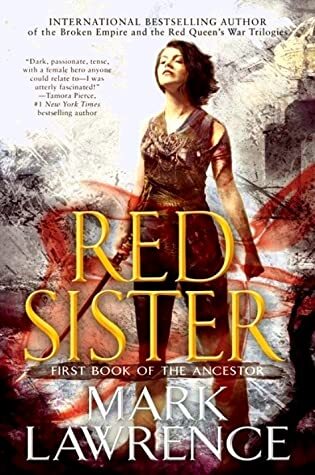 Pick Up Your Copy Here
Pick Up Your Copy Here Nona Grey is just like every other little girl that escaped the hangman’s noose for murder. She doesn’t really get friendship or girlfriends—romantic or otherwise. She’s still figuring out the whole relationships thing. The trilogy follows her from uncertain child to decisive young woman as she learns the proper technique for killing her enemies for the sake of all that is holy
What it is about?The international bestselling author of the Broken Empire and the Red Queen’s War trilogies begins a stunning epic fantasy series about a secretive order of holy warriors…
At the Convent of Sweet Mercy, young girls are raised to be killers. In some few children the old bloods show, gifting rare talents that can be honed to deadly or mystic effect. But even the mistresses of sword and shadow don’t truly understand what they have purchased when Nona Grey is brought to their halls.
A bloodstained child of nine falsely accused of murder, guilty of worse, Nona is stolen from the shadow of the noose. It takes ten years to educate a Red Sister in the ways of blade and fist, but under Abbess Glass’s care there is much more to learn than the arts of death. Among her class Nona finds a new family—and new enemies.
Despite the security and isolation of the convent, Nona’s secret and violent past finds her out, drawing with it the tangled politics of a crumbling empire. Her arrival sparks old feuds to life, igniting vicious struggles within the church and even drawing the eye of the emperor himself.
Beneath a dying sun, Nona Grey must master her inner demons, then loose them on those who stand in her way.
 Pick Up Your Copy Here
Pick Up Your Copy Here Lin can’t remember who she is, other than she is the emperor’s daughter, and she has to learn how to do bone shard magic if she wants to be his successor. If only Bayan would get out of her way. Jovis lost his wife and will do anything to find her—and anything usually involves creating another avenue for his swifter death. If only he could stop saving children and picking up pathetic sea creatures
What it is about?The emperor’s reign has lasted for decades, his mastery of bone shard magic powering the animal-like constructs that maintain law and order. But now his rule is failing, and revolution is sweeping across the Empire’s many islands.
Lin is the emperor’s daughter and spends her days trapped in a palace of locked doors and dark secrets. When her father refuses to recognise her as heir to the throne, she vows to prove her worth by mastering the forbidden art of bone shard magic.
Yet such power carries a great cost, and when the revolution reaches the gates of the palace, Lin must decide how far she is willing to go to claim her birthright – and save her people.
 I’m a homeschooling milspouse mom that likes to end the night in a made-up world so that I can forget my responsibilities for a little while. I also try to make up my own worlds and convince others that they’re not that bad. Currently located in Utah with two kiddos, my soldier and a rescued great dane mix. I enjoy dad jokes, kayaking, eating all the baked goods and sometimes making artsy things. WHERE TO FIND HER
I’m a homeschooling milspouse mom that likes to end the night in a made-up world so that I can forget my responsibilities for a little while. I also try to make up my own worlds and convince others that they’re not that bad. Currently located in Utah with two kiddos, my soldier and a rescued great dane mix. I enjoy dad jokes, kayaking, eating all the baked goods and sometimes making artsy things. WHERE TO FIND HERYou can find her on Twitter at @BriannaSinder.
December 27, 2021
Eleni’s Favorite Books From 2021
Granted that the first five months of 2021 were mostly focused on writing my uni dissertation so most of my reading up until May was of an academic nature, I had an incredible year SFF wise, and I tried to narrow it down to 10 top reads. Let’s see me fail, shall we?
In no particular order:
The Licanius Trilogy by James Islington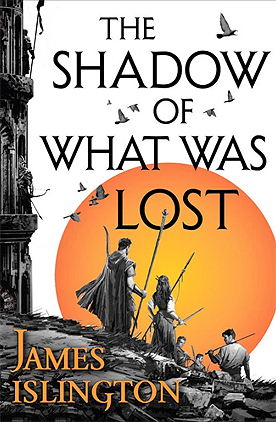 Pick Up Your Copy Here
Pick Up Your Copy Here This is an epic fantasy trilogy with lots of homages to classic fantasy behemoths such as LOTR, but it stands solidly on its own two feet as one of my favorite series of all time now because of how brilliantly the plot was woven and how deeply attached I grew to its characters and all they go through. With some of my favorite tropes, such as time travel, immortality, found family, and memory loss, this series sank its hooks into me and did not let go until the very end 2,223 pages later.
What it is about?It has been twenty years since the end of the war. The dictatorial Augurs—once thought of almost as gods—were overthrown and wiped out during the conflict, their much-feared powers mysteriously failing them. Those who had ruled under them, men and women with a lesser ability known as the Gift, avoided the Augurs’ fate only by submitting themselves to the rebellion’s Four Tenets. A representation of these laws is now written into the flesh of any who use the Gift, forcing those so marked into absolute obedience.
As a student of the Gifted, Davian suffers the consequences of a war fought—and lost—before he was born. Despised by most beyond the school walls, he and those around him are all but prisoners as they attempt to learn control of the Gift. Worse, as Davian struggles with his lessons, he knows that there is further to fall if he cannot pass his final tests.
But when Davian discovers he has the ability to wield the forbidden power of the Augurs, he sets into motion a chain of events that will change everything. To the north, an ancient enemy long thought defeated begins to stir. And to the west, a young man whose fate is intertwined with Davian’s wakes up in the forest, covered in blood and with no memory of who he is…
 Pick Up Your Copy Here
Pick Up Your Copy Here How would you lead your life if you knew that your soul would then reincarnate based on how good or bad you were? The worst of the worst come back as terrible monsters. It’s a fun question to ponder and one that went through my head more than once while reading this standalone led by a fantastic main lady and her fighting against the world if necessary to make sure her daughter is safe. Monster racing, a mystery that could reveal a much larger conspiracy, and an amazing amount of heart all in one neatly wrapped up novel that I could not put down
What it is about?In this stand-alone fantasy, Durst introduces an imaginative new world in which a pair of strong and determined women risk their lives battling injustice, corruption, and deadly enemies in their quest to become monster-racing champions.
Life, death, and rebirth – in Becar, who you are in this life will determine your next life. Yet there is hope – you can change your destiny with the choices you make. But for the darkest individuals, there is no redemption: you come back as a kehok, a monster, and are doomed to be a kehok for the rest of time.
Unless you can win the Races.
After a celebrated career as an elite kehok rider, Tamra became a professional trainer. Then a tragic accident shattered her confidence, damaged her reputation, and left her nearly broke. Now, she needs the prize money to prevent the local temple from taking her daughter away from her, and that means she must once again find a winning kehok…and a rider willing to trust her.
Raia is desperate to get away from her domineering family and cruel fiancé. As a kehok rider, she could earn enough to buy her freedom. But she needs a first-rate trainer.
Impressed by the inexperienced young woman’s determination, Tamra hires Raia and pairs her with a strange new kehok with the potential to win – if he can be tamed.
But in this sport, if you forget you’re riding on the back of a monster, you die. Tamra and Raia will work harder than they ever thought possible to win the deadly Becaran Races – and in the process, discover what makes this particular kehok so special.
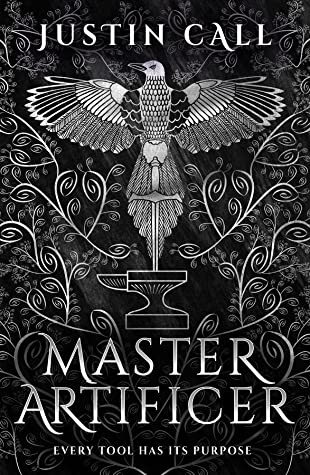 Pick Up Your Copy Here
Pick Up Your Copy Here A further reaching, more mysterious, bloodier, darker, and bad ass sequel to Master of Sorrows, with surprises around every corner and more worldbuilding than even your grandfather’s tall tales. Master Artificer lays more of the foundation in this long epic fantasy following the baby dark lord coming into his powers, and I keep on being extremely excited (and only mildly scared) for what is to come next. I’m often quoted as saying that returning to this series was like riding a bike on fire, down a steep hill, without gears, and if you haven’t read this yet you’ve no idea how accurate that statement probably is.
What it is about?The fabulous sequel to 2019’s hit debut novel: Master of Sorrows.
Annev has avoided one fate. But a darker path may still claim him . . .
After surviving the destruction of Chaenbalu, new mysteries and greater threats await Annev and his friends in the capital city of Luqura. As they navigate the city’s perilous streets, Annev searches for a way to control his nascent magic and remove the cursed artifact now fused to his body.
But what might removing it cost him?
As Annev grapples with his magic, Fyn joins forces with old enemies and new allies, waging a secret war against Luqura’s corrupt guilds in the hopes of forging his own criminal empire. Deep in the Brakewood, Myjun is learning new skills of her own as apprentice to Oyru, the shadow assassin who attacked the village of Chaenbalu – but the power of revenge comes at a daunting price. And back in Chaenbalu itself, left for dead in the Academy’s ruins, Kenton seeks salvation in the only place he can: the power hoarded in the Vault of Damnation . . .
 Pick Up Your Copy Here
Pick Up Your Copy Here The perfect mix of funny, sassy, and magical, with ever increasing stakes and memorable characters that endear themselves to you in ways you don’t even expect. This was the kind of feel good fantasy that is good to have once in a while as a palate cleanser, or to get you out of a reading slump, since the first two books feels more like introductory standalones and then books 3-5 turn a tad heavier and more intense but by no means less entertaining and fun.
What it is about?Eli Monpress is talented. He’s charming. And he’s a thief.
But not just any thief. He’s the greatest thief of the age – and he’s also a wizard. And with the help of his partners – a swordsman with the most powerful magic sword in the world but no magical ability of his own, and a demonseed who can step through shadows and punch through walls – he’s going to put his plan into effect.
The first step is to increase the size of the bounty on his head, so he’ll need to steal some big things. But he’ll start small for now. He’ll just steal something that no one will miss – at least for a while.
Like a king.
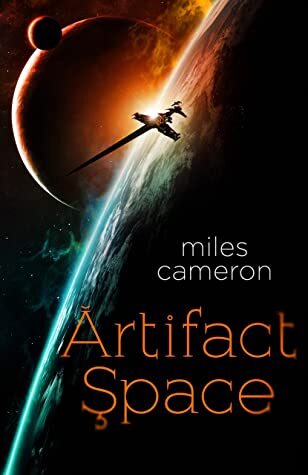 Pick Up Your Copy Here
Pick Up Your Copy Here A magnificent sci-fi debut, with character work you live for and worldbuilding to match. The varied cast of characters, brought to life by immersive and witty writing, is the shining star of this book but Cameron’s evocative prose definitely made sure that even the settings felt like characters themselves as well. It was the perfect read for someone like me who’d previously avoided literary sci-fi, due to a common use of heavy science/math or sociopolitical commentary that weighs a book down for me. This novel instead had it all, action, character work, fun, cool tech, wonder, and tension. Also swords in space.
What it is about?Out in the darkness of space, something is targeting the Greatships.
With their vast cargo holds and a crew that could fill a city, the Greatships are the lifeblood of human-occupied space, transporting an unimaginable volume – and value – of goods from City, the greatest human orbital, all the way to Tradepoint at the other, to trade for xenoglas with an unknowable alien species.
It has always been Marca Nbaro’s dream to achieve the near-impossible: escape her upbringing and venture into space.
All it took, to make her way onto the crew of the Greatship Athens was thousands of hours in simulators, dedication, and pawning or selling every scrap of her old life in order to forge a new one. But though she’s made her way onboard with faked papers, leaving her old life – and scandals – behind isn’t so easy.
She may have just combined all the dangers of her former life, with all the perils of the new . . .
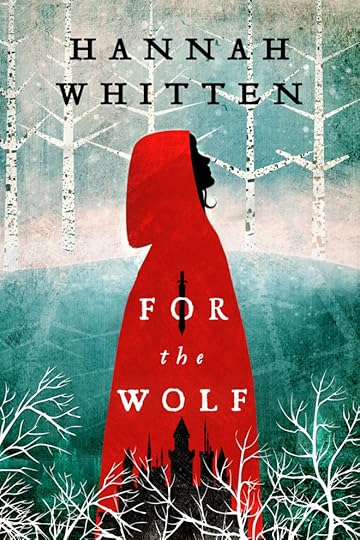 Pick Up Your Copy Here
Pick Up Your Copy Here This was an author debut which borrowed from some of my favorite fairy tales (Beauty and the Beast & Little Red Riding Hood for example) and then molded them all together to create something new, fresh, and oh so atmospheric. I loved the ongoing narrative of consent throughout the whole thing, and not just in a sexual/romantic context either. Furthermore, the trope of a sentient magic forest is one I always love to read. Tired Man TM Eamon is also very dear to my heart; he just needs rest and a drink, and I can always relate to a tired and done character ahaha.
What it is about?The first daughter is for the Throne.
The second daughter is for the Wolf.
For fans of Uprooted and The Bear and the Nightingale comes a dark fantasy novel about a young woman who must be sacrificed to the legendary Wolf of the Wood to save her kingdom. But not all legends are true, and the Wolf isn’t the only danger lurking in the Wilderwood.
As the only Second Daughter born in centuries, Red has one purpose-to be sacrificed to the Wolf in the Wood in the hope he’ll return the world’s captured gods.
Red is almost relieved to go. Plagued by a dangerous power she can’t control, at least she knows that in the Wilderwood, she can’t hurt those she loves. Again.
But the legends lie. The Wolf is a man, not a monster. Her magic is a calling, not a curse. And if she doesn’t learn how to use it, the monsters the gods have become will swallow the Wilderwood-and her world-whole.
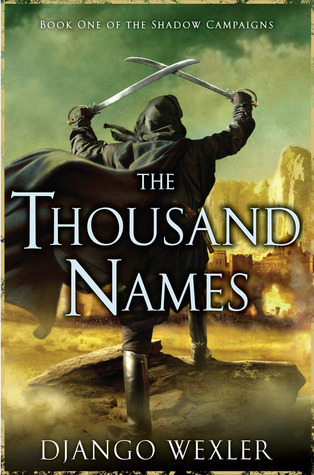 Pick Up Your Copy Here
Pick Up Your Copy Here This was a reread because I wanted to go back to one of my top five favorite series of all time. It has the right mix of a varied cast of characters, intrigue, high stakes, razor sharp humor, darkness, magic, and tension. Inspired by the Napoleonic campaigns and the French Revolution, there are also a ton of history easter eggs for the historically passionate out there. Every book changes in tone and keeps things fresh while also seeing so much character development for the protagonists, which is always chef’s kiss. Plus the writing is optimally paced and atmospheric to fit the kind of action at any given moment.
What it is about?Enter an epic fantasy world that echoes with the thunder of muskets and the clang of steel—but where the real battle is against a subtle and sinister magic….
Captain Marcus d’Ivoire, commander of one of the Vordanai empire’s colonial garrisons, was resigned to serving out his days in a sleepy, remote outpost. But that was before a rebellion upended his life. And once the powder smoke settled, he was left in charge of a demoralized force clinging tenuously to a small fortress at the edge of the desert.
To flee from her past, Winter Ihernglass masqueraded as a man and enlisted as a ranker in the Vordanai Colonials, hoping only to avoid notice. But when chance sees her promoted to command, she must win the hearts of her men and lead them into battle against impossible odds.
The fates of both these soldiers and all the men they lead depend on the newly arrived Colonel Janus bet Vhalnich, who has been sent by the ailing king to restore order. His military genius seems to know no bounds, and under his command, Marcus and Winter can feel the tide turning. But their allegiance will be tested as they begin to suspect that the enigmatic Janus’s ambitions extend beyond the battlefield and into the realm of the supernatural—a realm with the power to ignite a meteoric rise, reshape the known world, and change the lives of everyone in its path.
 Pick Up Your Copy Here
Pick Up Your Copy Here My kind of grimdark right here. I turned to the first two installments of this series when I needed a change of pace from high fantasy, and it was just what I needed to clear my head after a reading slump. The characters and all their flaws are brilliant, and the unreliable narrator is the cherry on top of a grim and unforgiving world that is also incredibly full of hope for a better future and loads of wholesome found family dynamics. There are also plenty of plot twists to keep you on the edge of your seat!
What it is about?The war is over, and army priest Tomas Piety heads home with Sergeant Bloody Anne at his side. But things have changed while he was away: his crime empire has been stolen and the people of Ellinburg–his people–have run out of food and hope and places to hide. Tomas sets out to reclaim what was his with help from Anne, his brother, Jochan, and his new gang: the Pious Men. But when he finds himself dragged into a web of political intrigue once again, everything gets more complicated.
As the Pious Men fight shadowy foreign infiltrators in the back-street taverns, brothels, and gambling dens of Tomas’s old life, it becomes clear:
The war is only just beginning.
 Pick Up Your Copy Here
Pick Up Your Copy Here There aren’t enough words for me to describe how much I loved and adored this series. Suffice it to say that I read each installment in less than a day. Arden weaves a tale of magic and change, pain and love, and old traditions being destroyed by the new in a world that is moving on, so damn beautifully and at times in such a heart rendering or warming manner. The influence of Slavic folklore and Russian mythology is mesmerizing and calling back to a culture deeply steeped in the natural movements and essences of the world. The character and power dynamics are so artfully navigated, and the prose is simply beautiful and flowing moreover.
What it is about?At the edge of the Russian wilderness, winter lasts most of the year and the snowdrifts grow taller than houses. But Vasilisa doesn’t mind—she spends the winter nights huddled around the embers of a fire with her beloved siblings, listening to her nurse’s fairy tales. Above all, she loves the chilling story of Frost, the blue-eyed winter demon, who appears in the frigid night to claim unwary souls. Wise Russians fear him, her nurse says, and honor the spirits of house and yard and forest that protect their homes from evil.
After Vasilisa’s mother dies, her father goes to Moscow and brings home a new wife. Fiercely devout, city-bred, Vasilisa’s new stepmother forbids her family from honoring the household spirits. The family acquiesces, but Vasilisa is frightened, sensing that more hinges upon their rituals than anyone knows.
And indeed, crops begin to fail, evil creatures of the forest creep nearer, and misfortune stalks the village. All the while, Vasilisa’s stepmother grows ever harsher in her determination to groom her rebellious stepdaughter for either marriage or confinement in a convent.
As danger circles, Vasilisa must defy even the people she loves and call on dangerous gifts she has long concealed—this, in order to protect her family from a threat that seems to have stepped from her nurse’s most frightening tales.
The Bear and the Nightingale is a magical debut novel from a gifted and gorgeous voice. It spins an irresistible spell as it announces the arrival of a singular talent.
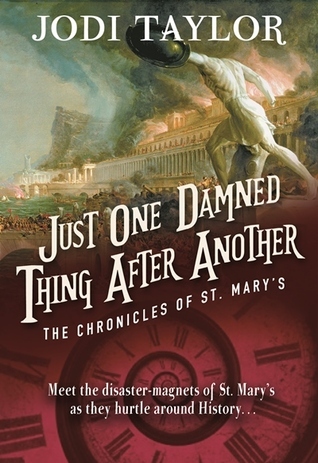 Pick Up Your Copy Here
Pick Up Your Copy Here Another book that I finished in one day (at 3.30am in fact) because I simply could not put it down. Thanks to David S. from the FanFiAddict team who suggested it for a buddy read, I got to enjoy an absolutely hilarious novel whose essence could be described as, Doctor Who meets the characters from The Mummy (the one with Brendan Fraser and Rachel Weisz – we respect them and them alone in this house), and with a sprinkling of the Warehouse 13 type of misadventures. And tea, industrial amounts of tea, because Britishness. I loved the prose, loved the characters, loved the found family trope, loved the fourth wall breaks, and absolutely adored the whole concept of time-travelling historians. Can’t wait to read the rest of this series, so full of heart and with an uncompromising disaster of a protagonist who is a delight to follow
What it is about?“History is just one damned thing after another.”
Behind the seemingly innocuous façade of St Mary’s, a different kind of historical research is taking place. They don’t do ‘time-travel’ – they ‘investigate major historical events in contemporary time’. Maintaining the appearance of harmless eccentrics is not always within their power – especially given their propensity for causing loud explosions when things get too quiet.
Meet the disaster-magnets of St Mary’s Institute of Historical Research as they ricochet around History. Their aim is to observe and document – to try and find the answers to many of History’s unanswered questions…and not to die in the process. But one wrong move and History will fight back – to the death. And, as they soon discover – it’s not just History they’re fighting.
Follow the catastrophe curve from 11th-century London to World War I, and from the Cretaceous Period to the destruction of the Great Library at Alexandria. For wherever Historians go, chaos is sure to follow in their wake….
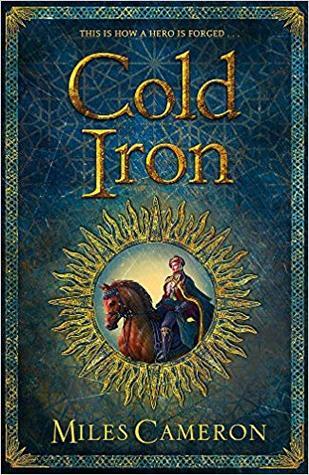 Pick Up Your Copy Here
Pick Up Your Copy Here was a fantasy series inspired by the Byzantine empire which isn’t something I can say I’ve found often. It was lovely to enjoy something so culturally close to my own background while at the same time getting to enjoy a great level of character work and worldbuilding. Cameron’s work thrives on description of both setting and frank feelings and I for one enjoy that level of authenticity. I also mentioned it in my reviews for this series, but his writing and tackling of various themes was extremely elegant.
What it is about?Aranthur is a student. He showed a little magical talent, is studying at the local academy, and is nothing particularly special. Others are smarter. Others are more talented. Others are quicker to pick up techniques. But none of them are with him when he breaks his journey home for the holidays in an inn. None of them step in to help when a young woman is thrown off a passing stage coach into the deep snow at the side of the road. And none of them are drawn into a fight to protect her.
One of the others might have realised she was manipulating him all along . . .
A powerful story about beginnings, coming of age, and the way choosing to take one step towards violence can lead to a slippery and dangerous slope, this is an accomplished fantasy series driven by strong characters and fast-paced action
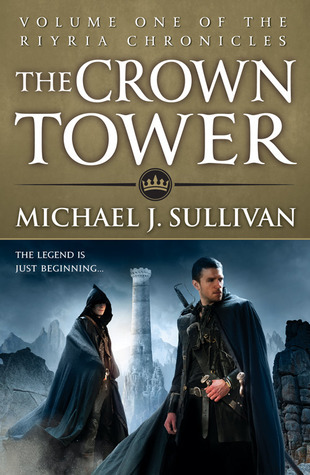 Pick Up Your Copy Here
Pick Up Your Copy Here was a reread of one of my comfort series and I will always come back to Royce and Hadrian’s misadventures and exchange of sassy quips any time I need the metaphorical hug of reassurance when real life stuff is wearing me down. It is also always great to see how one of my top favorite duos in SFF first met in this first prequel and became the powerhouse that they are!
What it is about?TWO MEN WHO HATE EACH OTHER. ONE IMPOSSIBLE MISSION. A LEGEND IN THE MAKING.
A warrior with nothing to fight for is paired with a thieving assassin with nothing to lose. Together they must steal a treasure that no one can reach. The Crown Tower is the impregnable remains of the grandest fortress ever built and home to the realm’s most valuable possessions. But it isn’t gold or jewels the old wizard is after, and this prize can only be obtained by the combined talents of two remarkable men. Now if Arcadius can just keep Hadrian and Royce from killing each other, they just might succeed.
The Riyria Revelations and The Riyria Chronicles are two separate, but related series, and you can start reading with either Theft of Swords (publication order) or The Crown Tower (chronological order).
December 26, 2021
Alcoholic Drinks to Pair With Favorite Fantasy and Horror Books
“In wine there is wisdom, in beer there is Freedom, in water there is bacteria.” ~ Benjamin Franklin
Covid 19 has had weird effects on all of us, trapped at home. Some of us introverts, myself included, reveled in the beginning for all the reading time I now had. Others have had to find ways to entertain themselves between their four walls. Either way, as we are moving into 2022 and the third year of the pandemic, I am sitting here playing a bit of a game with myself. What alcoholic beverages pair well with some of my favorite fantasy books?
Books and drinks are very much personal likes. What is delicious to one person tastes like hell to another. So we offer up some, possibly, tasty cocktails that might pair with your favorite fantasy and horror stories.
My first pairing is from one of my favorite short stories for 2021, Badass Moms of the Zombie Apocolypse. A story that was nominated for a Hugo, and rightly so. It is courageous and extraordinary. A story that makes you fist pump with a hearty, “Fuck yeah.” I paired it with a fun zombie shot. I picked a shot because, frankly, you do not have time to lounge with a drink when you are running from the horde.
My second pick was The Purple People Eater cocktail. If you read A Deadly Education, you know that no one is safe, and creatures are eating folks left and right. This cocktail seemed fitting. You will probably have a hell of a hangover drinking these, which also seemed fitting considering the story. A price must be paid.
We turn our attention to a Psalm for the Wild Built by Becky Chambers, a story with a much different feel than the first two. While we are running for our lives in the first and hoping not to get eaten in the second, A Psalm for the Wild Built is a balm for the reader’s soul. It is a hopeful glimpse into a better time where humanity makes the right choices. We chose a cocktail that is creamy with honey and herbs. One that is fit to sit by a fire.
While these are all fun pairings that recommend, a few other notable call-outs are, Fortunes Fool by Angela Boord is a nod to Silver in her books. And Psycho Killers in Love by C.T. Phipps is the famous Psycho killer cocktail by The Dead Rabbit.
Tell me what you think. Is there a better drink pairing? Can you tell me of another book with a perfect drink pairing? I will put together another list.
Eat, drink, and be merry for tomorrow we are all stuck inside!
 Badass Moms in the Zombie Apocalypse By Rae Carson
Badass Moms in the Zombie Apocalypse By Rae Carson  About
About The container will hold… please god let it hold
Check Out Our ReviewShort Story Review; Badass Moms in the Zombie Apocalypse by Rae Carson
Drink Pairing Zombie Brains Ingrediants 4 part peach schnapps1 part creme de menthe2 part Baileys Irish Cream1 part grenadineINSTRUCTIONSFill a double shot glass up to about 1/2 full with peach schnapps.Add a splash of creme de menthe to give the shot a green color.Place a small spoon over the top of the shot glass, upside down, and pour the Baileys on top so that it slides off the back of the spoon (doing this makes the Baileys fan out further while pouring, resulting in larger clumps in the shot glass). Make a small layer of Baileys, about 1/4 the size of the shot glass. See above video for example.Holding the grenadine bottle a few inches above the shot glass, add a few dashes of syrup, trying to aim for the bigger clumps of Baileys. Keep an eye on how the Baileys is reacting in the shot glass so that you get the “zombie brain” look that you want.
Zombie Brains Ingrediants 4 part peach schnapps1 part creme de menthe2 part Baileys Irish Cream1 part grenadineINSTRUCTIONSFill a double shot glass up to about 1/2 full with peach schnapps.Add a splash of creme de menthe to give the shot a green color.Place a small spoon over the top of the shot glass, upside down, and pour the Baileys on top so that it slides off the back of the spoon (doing this makes the Baileys fan out further while pouring, resulting in larger clumps in the shot glass). Make a small layer of Baileys, about 1/4 the size of the shot glass. See above video for example.Holding the grenadine bottle a few inches above the shot glass, add a few dashes of syrup, trying to aim for the bigger clumps of Baileys. Keep an eye on how the Baileys is reacting in the shot glass so that you get the “zombie brain” look that you want.Image and recipe courtesy of Homemade Hooplah
 A Deadly Education By naomi novik
A Deadly Education By naomi novik 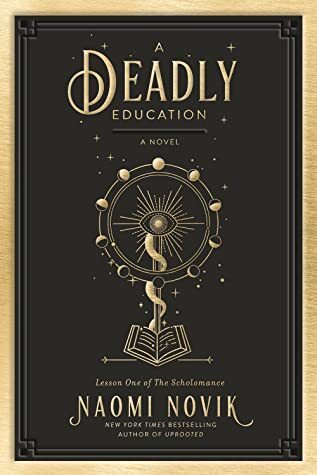 About
About Lesson One of the Scholomance: Learning has never been this deadly.
A Deadly Education is set at Scholomance, a school for the magically gifted where failure means certain death (for real) — until one girl, El, begins to unlock its many secrets.
There are no teachers, no holidays, and no friendships, save strategic ones. Survival is more important than any letter grade, for the school won’t allow its students to leave until they graduate… or die! The rules are deceptively simple: Don’t walk the halls alone. And beware of the monsters who lurk everywhere.
El is uniquely prepared for the school’s dangers. She may be without allies, but she possesses a dark power strong enough to level mountains and wipe out millions. It would be easy enough for El to defeat the monsters that prowl the school. The problem? Her powerful dark magic might also kill all the other students.
Review – A Deadly Education by Naomi Novik
Drink Pairing Purple People eater Cocktail Ingrediants simple syrup, optional – can use water or juice insteadpurple sugar, such as sanding sugar (aka sprinkles)1 1/2 part vodka1 part blue curacao1 part sweet and sour mix1 part grenadine1 part cranberry juice, can also use cran-grape or grape juiceINSTRUCTIONSOn a small plate, add purple sugar. Wet the rim of a glass with simple syrup (or cranberry juice or just water) and gently dab the top the glass in the purple sugar, coating the rim. See above video for example. Set glass aside.Combine vodka, blue curacao, sweet and sour mix, grenadine, and cranberry juice in a cocktail shaker filled with ice. Shake until combined.Fill the sugar-coated glass with ice. Pour purple people eater cocktail mix into glass until full.Serve immediately.
Purple People eater Cocktail Ingrediants simple syrup, optional – can use water or juice insteadpurple sugar, such as sanding sugar (aka sprinkles)1 1/2 part vodka1 part blue curacao1 part sweet and sour mix1 part grenadine1 part cranberry juice, can also use cran-grape or grape juiceINSTRUCTIONSOn a small plate, add purple sugar. Wet the rim of a glass with simple syrup (or cranberry juice or just water) and gently dab the top the glass in the purple sugar, coating the rim. See above video for example. Set glass aside.Combine vodka, blue curacao, sweet and sour mix, grenadine, and cranberry juice in a cocktail shaker filled with ice. Shake until combined.Fill the sugar-coated glass with ice. Pour purple people eater cocktail mix into glass until full.Serve immediately. Image and recipe courtesy of Homemade Hooplah
 A Psalm for the wild built By becky chambers
A Psalm for the wild built By becky chambers 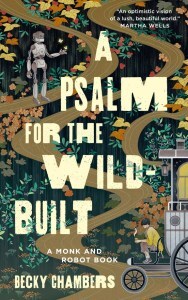 About
About In A Psalm for the Wild-Built, Hugo Award-winner Becky Chambers’s delightful new Monk and Robot series gives us hope for the future.
It’s been centuries since the robots of Panga gained self-awareness and laid down their tools; centuries since they wandered, en masse, into the wilderness, never to be seen again; centuries since they faded into myth and urban legend.
One day, the life of a tea monk is upended by the arrival of a robot, there to honor the old promise of checking in. The robot cannot go back until the question of “what do people need?” is answered.
But the answer to that question depends on who you ask, and how.
They’re going to need to ask it a lot.
Becky Chambers’s new series asks: in a world where people have what they want, does having more matter?
Review – A Psalm for the Wild Built by Becky Chambers
Drink Pairing Monks Sour Ingrediants 50 ml Bénédictine25 ml freshly squeezed lemon juice2 bar spoons of organic honey syrup1 dash of orange bittersGrated nutmeg15 ml of egg white InstructionsAdd all ingredients to a shakerMake sure you add the egg white lastAdd iceShake hardStrain into a cupGarnish with nutmegServe in a wooden cup if you can
Monks Sour Ingrediants 50 ml Bénédictine25 ml freshly squeezed lemon juice2 bar spoons of organic honey syrup1 dash of orange bittersGrated nutmeg15 ml of egg white InstructionsAdd all ingredients to a shakerMake sure you add the egg white lastAdd iceShake hardStrain into a cupGarnish with nutmegServe in a wooden cup if you canImage and recipe courtesy of A Lush Life Manual
 Salem's Lot By Stephen King
Salem's Lot By Stephen King 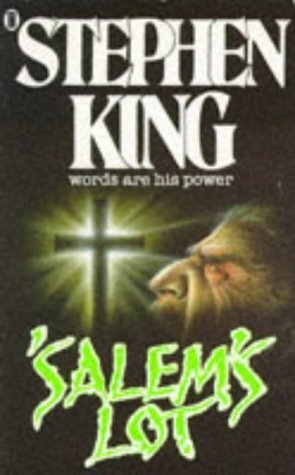 About
About Thousands of miles away from the small township of ‘Salem’s Lot, two terrified people, a man and a boy, still share the secrets of those clapboard houses and tree-lined streets. They must return to ‘Salem’s Lot for a final confrontation with the unspeakable evil that lives on in the town.
Drink Pairing GWARbar's "Balzerac” Ingrediants 2.5 parts Blackened whiskey (or a heavy pour)1 tbsp sugar (or 1 cube)A heavy dash of Peychaud’s BittersA dash of Rumple Minze peppermint schnappsA twist of lemon peel Instructions
GWARbar's "Balzerac” Ingrediants 2.5 parts Blackened whiskey (or a heavy pour)1 tbsp sugar (or 1 cube)A heavy dash of Peychaud’s BittersA dash of Rumple Minze peppermint schnappsA twist of lemon peel Instructions“Chill a lowball rocks glass either in the freezer or by filling it with ice and a little water and letting sit for at least 30 seconds. In a separate mixing glass, muddle sugar and bitters. Add ice to mixing glass. Add Blackened whiskey to mixing glass and stir gently. Dump out ice from rocks glass. Add a few drops of Rumple Minze to rocks glass (be careful to only use a few drops or the mint flavor can easily take over this drink!). Swirl Rumple Minze and dump out (or drink, I’m not judging). Rub the rim of rocks glass with lemon peel. Strain contents of mixing glass into rocks glass. Garnish with lemon twist.”
Image and recipe courtesy of Metal Injection
 Chasing Graves By Ben Galley
Chasing Graves By Ben Galley 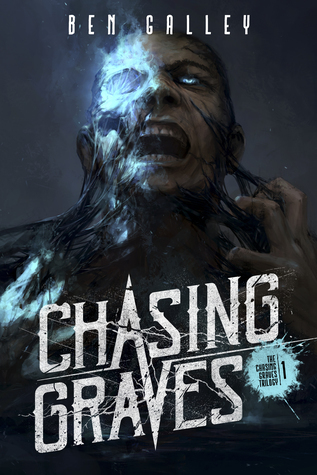 About
About Welcome to Araxes, where getting murdered is just the start of your problems.
Meet Caltro Basalt. He’s a master locksmith, a selfish bastard, and as of his first night in Araxes, stone cold dead.
They call it the City of Countless Souls, the colossal jewel of the Arctian Empire, and all it takes to be its ruler is to own more ghosts than any other. For in Araxes, the dead do not rest in peace in the afterlife, but live on as slaves for the rich.
While Caltro struggles to survive, those around him strive for the emperor’s throne in Araxes’ cutthroat game of power. The dead gods whisper from corpses, a soulstealer seeks to make a name for himself with the help of an ancient cult, a princess plots to purge the emperor from his armoured Sanctuary, and a murderer drags a body across the desert, intent on reaching Araxes no matter the cost.
Only one thing is certain in Araxes: death is just the beginning.
Review of Ben Galley- Chasing Graves
Drink Pairing Grave Digger Ingrediants 2 ounces Hard Cider1 ounce Whiskey (I used Bourbon)Ginger ale, to fillCrushed iceInstructionsIn a 12-16 ounce tumbler or high ball glass, combine the hard cider and whiskey.Fill the glass with crushed ice. Fill with ginger ale.
Grave Digger Ingrediants 2 ounces Hard Cider1 ounce Whiskey (I used Bourbon)Ginger ale, to fillCrushed iceInstructionsIn a 12-16 ounce tumbler or high ball glass, combine the hard cider and whiskey.Fill the glass with crushed ice. Fill with ginger ale.Image and recipe courtesy of Boulder Locavore
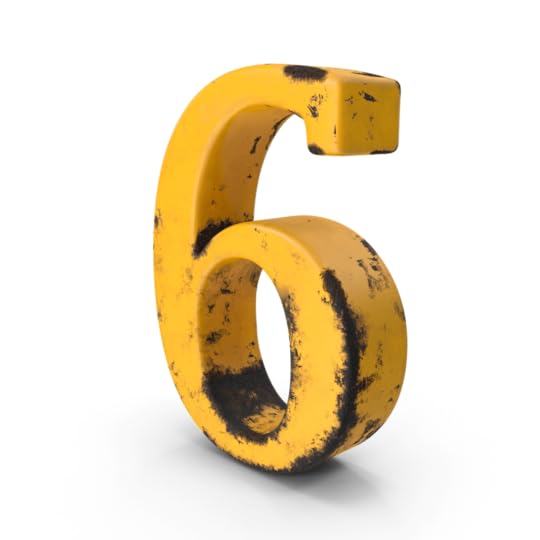 Carrie By Stephen King
Carrie By Stephen King  About
About Unpopular at school and subjected to her mother’s religious fanaticism at home, Carrie White does not have it easy. But while she may be picked on by her classmates, she has a gift she’s kept secret since she was a little girl: she can move things with her mind. Doors lock. Candles fall. Her ability has been both a power and a problem. And when she finds herself the recipient of a sudden act of kindness, Carrie feels like she’s finally been given a chance to be normal. She hopes that the nightmare of her classmates’ vicious taunts is over . . . but an unexpected and cruel prank turns her gift into a weapon of horror so destructive that the town may never recover.
Drink Pairing the ultimate bloody mary Ingrediants 4 ounces tomato juice2 ounces vodka2 dashes worcestershire sauce2 dashes hot sauce1 pinch salt1 pinch freshly ground black pepperGarnishes: Celery stalk, pickle spear, green olives, sprig of parsley InstructionsIf you want a rimmed glass, run a lemon or lime wedge around the lip of the glass then roll in kosher salt. Squeeze the citrus into a mixing glass.Mix tomato juice, vodka, worcestershire sauce, hot sauce, salt, and pepper into the mixing glass and stir vigorously. Taste and adjust ingredients, if needed.Strain into glass filled with ice and garnish with desired toppings. Cheers!
the ultimate bloody mary Ingrediants 4 ounces tomato juice2 ounces vodka2 dashes worcestershire sauce2 dashes hot sauce1 pinch salt1 pinch freshly ground black pepperGarnishes: Celery stalk, pickle spear, green olives, sprig of parsley InstructionsIf you want a rimmed glass, run a lemon or lime wedge around the lip of the glass then roll in kosher salt. Squeeze the citrus into a mixing glass.Mix tomato juice, vodka, worcestershire sauce, hot sauce, salt, and pepper into the mixing glass and stir vigorously. Taste and adjust ingredients, if needed.Strain into glass filled with ice and garnish with desired toppings. Cheers!Image and recipe courtesy of The Urben Life
 Fortune's Fool By Angela Boord
Fortune's Fool By Angela Boord 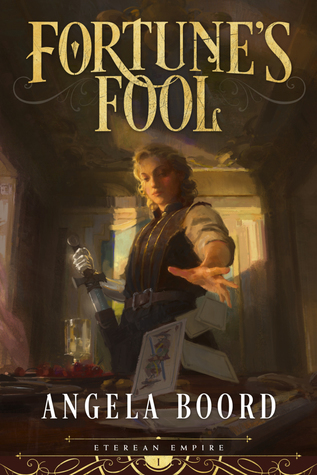 About
About A secret affair. A disfiguring punishment. A burning need for revenge.
Kyrra d’Aliente has a bad reputation and an arm made of metal.
Cast out of the safe and luxurious world of silk to which she was born, played as a pawn in a game of feuding Houses, Kyrra navigates a dangerous world of mercenaries, spies, and smugglers while disguising herself as a man.
War destroyed her family and the man she loved.
Vengeance is within her grasp.
But is she willing to pay its price?
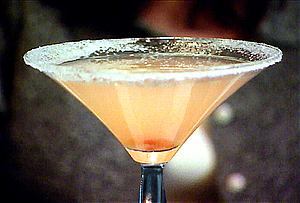 Silver Martini Ingrediants 1 teaspoon sugar1-ounce vodka1-ounce silver rum1/2-ounce pineapple juice1/2-ounce white grape juice1/2-ounce pink lemonade1/2 teaspoon caviar or salmon egg roeInstructionsPlace sugar in a small saucer.Dip the rim of the Martini glass in water and press rim into the sugar to coat.Mix all ingredients, except caviar or salmon egg roe, in a shaker.Put the caviar on the bottom of the glass and pour the drink over the caviar.
Silver Martini Ingrediants 1 teaspoon sugar1-ounce vodka1-ounce silver rum1/2-ounce pineapple juice1/2-ounce white grape juice1/2-ounce pink lemonade1/2 teaspoon caviar or salmon egg roeInstructionsPlace sugar in a small saucer.Dip the rim of the Martini glass in water and press rim into the sugar to coat.Mix all ingredients, except caviar or salmon egg roe, in a shaker.Put the caviar on the bottom of the glass and pour the drink over the caviar.Image and recipe found on Group Recipes
 Rise of the gods By dyrk ashton
Rise of the gods By dyrk ashton 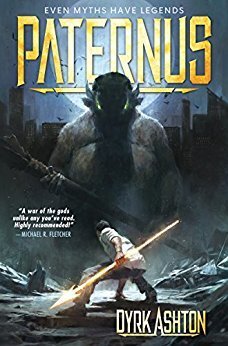 About
About Described as American Gods meets The Avengers and Supernatural meets The Lord of the Rings, Paternus combines myths from around the world in a modern story of action and intrigue that is “urban fantasy on the surface, but so much more at its core!”
Even myths have legends. And not all legends are myth.
When a local hospital is attacked by strange and frightening men, Fiona Patterson and Zeke Prisco save a catatonic old man named Peter—and find themselves running for their lives with creatures beyond imagination hounding their every step.
With nowhere else to turn, they seek out Fi’s enigmatic Uncle Edgar. But the more their questions are answered, the more they discover that nothing is what it seems–not Peter, not Edgar, perhaps not even themselves.
The gods and monsters, heroes and villains of lore—they’re real. And now they’ve come out of hiding to hunt their own. In order to survive, Fi and Zeke must join up with powerful allies against an ancient evil that’s been known by many names and feared by all. The final battle of the world’s oldest war has begun.
Paternus: Rise of Gods, is Dyrk Ashton’s critically acclaimed debut novel and the first book in The Paternus Trilogy. It has been compared to works by Neil Gaiman, Scott Hawkins, Roger Zelazny, China Miéville, Joss Whedon, and Kevin Hearne.
Review – Paternus: Rise of the Gods by Dyrk Ashton
Drink Pairing Nectar of the Gods Ingrediants
Nectar of the Gods Ingrediants 1 (1.5 fluid ounce) jigger raspberry-flavored liqueur (such as Chambord®)
1 ½ fluid ounces agave nectar
4 fluid ounces champagne, or as needed
InstructionsStir raspberry-flavored liqueur and agave nectar together in a tall, thin-sided glass using a spoon. Tilt the glass at an angle and pour in champagneImage and recipe found on All Recipes
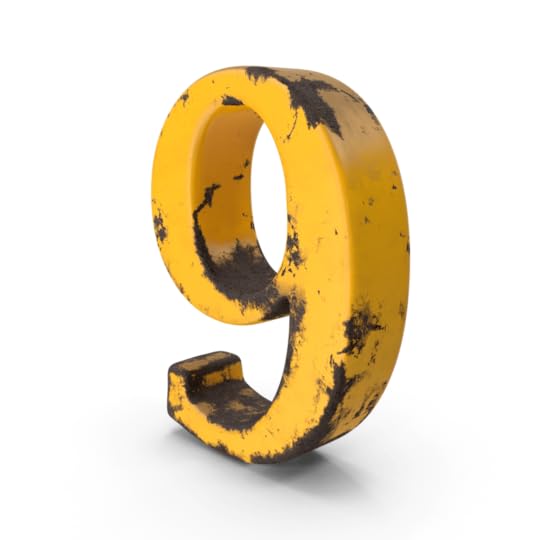 psycho killer in love By c.t. phipps
psycho killer in love By c.t. phipps 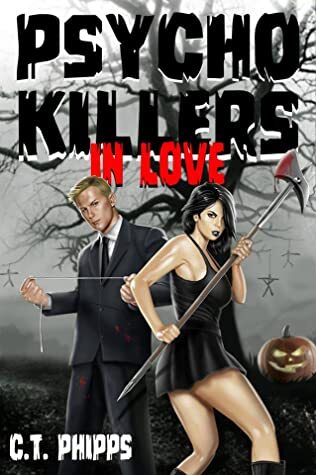 About
About FROM THE BEST-SELLING AUTHOR OF THE SUPERVILLAINY SAGA
What if all the villains of slasher movies were real? What if the movies made about them were just adaptations of real-life killers with supernatural powers? This is a fact known to William and Carrie because their father, Billy the Undying, was one of the worst slashers of all time. So much so that they’ve spent the past decade in an asylum out of fear they’d end up just like him. Escaping, the two have decided to form a new life on the road. Except, a chance encounter in a dingy diner introduces William to the girl of his dreams.
Too bad she’s a girl on a mission to kill all slashers. But maybe the best way to catch a supernatural serial killer is with another pair of them.
Enjoy this exciting prequel to the United States of Monsters books!
Review – Psycho Killers In Love by C.T. Phipps
BookTrack – Psycho Killers in Love by C.T. Phipps
Drink Pairing image: Bar Magazine Psycho Killer Ingrediants 2 ounces Redbreast 12-year-old Irish whiskey3/4 ounce cocoa nib–infused Campari*1/2 ounce Marie Brizard white creme de cacao1/2 ounce Giffard Banane du Brésil2 dashes absintheInstructions
image: Bar Magazine Psycho Killer Ingrediants 2 ounces Redbreast 12-year-old Irish whiskey3/4 ounce cocoa nib–infused Campari*1/2 ounce Marie Brizard white creme de cacao1/2 ounce Giffard Banane du Brésil2 dashes absintheInstructionsAdd all ingredients into a mixing glass with ice and stir until well-chilled.
“whiskey cocktail by bartending pro Jillian Vose of The Dead Rabbit.”
recipe found on Liquor.Com
 Last Smile in Sunder City By Luke Arnold
Last Smile in Sunder City By Luke Arnold 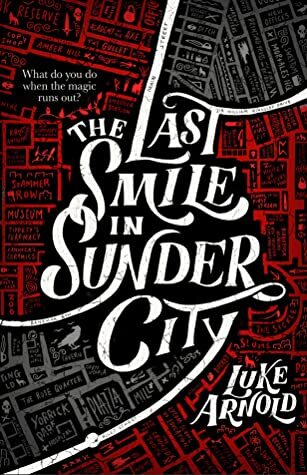 About
About A former soldier turned PI tries to help the fantasy creatures whose lives he ruined in a world that’s lost its magic in a compelling debut fantasy by Black Sails actor Luke Arnold.
Welcome to Sunder City. The magic is gone but the monsters remain.
I’m Fetch Phillips, just like it says on the window. There are a few things you should know before you hire me:
1. Sobriety costs extra.
2. My services are confidential.
3. I don’t work for humans.
It’s nothing personal—I’m human myself. But after what happened, to the magic, it’s not the humans who need my help.
Walk the streets of Sunder City and meet Fetch, his magical clients, and a darkly imagined world perfect for readers of Ben Aaronovitch and Jim Butcher.
 Smoked Old Fashioned Ingrediants Ice 1 tsp of sugar1 tbs orange bitters1 tsp liquid smoke2 ounces whiskeyIceOrange for garnishInstructionsDissolve sugar in the bitters and add liquid smoke.Add whiskey and stirAdd ice to whiskey glassPour drink over iceGarnish with orangeRecipe found on Scrappy Geek
Smoked Old Fashioned Ingrediants Ice 1 tsp of sugar1 tbs orange bitters1 tsp liquid smoke2 ounces whiskeyIceOrange for garnishInstructionsDissolve sugar in the bitters and add liquid smoke.Add whiskey and stirAdd ice to whiskey glassPour drink over iceGarnish with orangeRecipe found on Scrappy Geek
December 25, 2021
Hallelujah. Holy shit. Where’s the Tylenol?
I leave you with the greatest holiday scene from a Christmas movie ever.
December 23, 2021
REVIEW – OATHBREAKER BY A.J. RETTGER
 check it out here
check it out here BOOK REVIEW
OATHBREAKER by A.J. RETTGER December 23, 2021 10:00 am No Comments Facebook Twitter WordPressThere are certain moods and times when I can digest some grimdark in my reading diet, and “Oathbreaker” seemed to be the perfect menu item. This book is the debut from A.J. Rettger. I have to be honest, I have rarely waffled so much on a rating for a novel. Let’s see why, and what I thought of this book.
In “Oathbreaker”, Rettger gives us the story of Mario Deschamps. Mario is a postulant knight, with quite the pedigree. His father – Pablo – was a controversial figure, hero to some, villain to others. Pablo, at the pinnacle of a highly decorated career as a knight himself, is dispatched by his king to quash an Elvish uprising. He is successful, catapulting him into legendary (or infamous) status, and then he promptly disappears, never to be heard from again.
The vanishing of Pablo leaves Mario bequeathed his father’s legacy as a famed fighter, and it is a big legacy to live up to. But Mario, initially in the beginning of the book, seems well positioned to achieve celebrity heights in the realm of chivalry, just as his father did. Mario is handsome, a relatively skilled fighter, and has the best of intentions.
In order to achieve complete knighthood, Mario, after graduating from formal training at the Knight’s College, sets off on his first quest, trying to be recognized for doing a good deed. In the world of “Oathbreaker”, knights must first complete a good deed in order to be officially knighted.
But Mario is in for a rude awakening, as he embarks on a mission to find and eradicate a group of bandits. The young novice knight is drawn into a cesspool of senseless violence, hatred, prejudice, religious fanaticism, political intrigue, secrets, very scary monsters, and complete mayhem.
Characterization is one of the things I enjoyed in the novel, and Rettger permits his characters to grow and develop organically in response to the tumultuous and heartbreaking events that occur in their lives. The secondary characters are often very complicated, or very emotionally damaged. This makes for a very compelling cast surrounding the protagonist, Mario.
As for Mario himself: he is somewhat of a bumbling hero, whose naivety is part pitiful, part endearing, part frustrating. One can’t help feeling sorry for him, I believe, because Rettger puts him through pain, lots and lots of pain.
On that note, I commend Rettger for his sensitive handling of some very challenging and disturbing topics. Obligatory trigger warning here: in particular sexual assault and bigotry are prevalent in the novel, so readers be warned. Rettger places these distressing scenes in the book strictly as part of the realism of the novel, not as a reflection of his beliefs.
“Oathbreaker” is definitely a grimdark book, and a sense of brutality permeates the novel. The universe Rettger has created is filled with barbarity and cruelty. There are very few happy endings for any of the characters, and the reader will be unable to tear themselves away from the ruthlessness and starkness of their journey, waiting to see if they can make it out alive.
I must also applaud Rettger for the depth and breadth of the diverse races in “Oathbreaker”. While no new ground is broken here in terms of what you might expect to find in a high fantasy novel, one will find werewolves, vampires, demons, dwarfs, elves, humans, shapeshifters, and so much more. Rettger took great pains to represent a balanced universe populated by various cultures, complete with realistic internal and external conflict occurring with those cultures.
In terms of the plot, if you love fast-paced books, “Oathbreaker” is truly the definition of a book one can’t put down. Rettger does not permit the reader to take much of a breath, once the reader gets past a lengthy prologue, going from one incredible fight scene to the next! If there is one thing I cannot fault the author for, is his non-stop, thrilling action sequences. Rettger will have you on the edge of your seat, wondering what calamity is coming next for our hero and his companions, and if they can possibly make it out alive.
So after all this positive feedback I have provided above, why any indecision about how to rate “Oathbreaker”? As noted, this is an excellent effort by Rettger, and overall I loved the book and found it hard to put down once I started reading. The technical imperfections certainly do not diminish what a thrilling read “Oathbreaker” was.
The book was well-written, but there were a few moments the prose was a bit off for me, but I believe that was more of a personal preference than any terrible flaws per se in Rettger’s writing.
“Oathbreaker” has a cliff-hanger / ambiguous-type ending, and that may not be for everyone, but personally I thought it was awesome! While the aspect of the prose took this book just barely out of five-star range for me, it was very close to a five-star, especially considering how positively electrifying the novel was.
Rettger is obviously a highly talented new writer who will only get better, and readers looking for a very young Andrzej Sapkowski or Joe Abercrombie-type author would do well to check out “Oathbreaker”! I am definitely looking forward to the next book by Rettger!
Check Out some of our other reviewsShort Story Review – Little Free Library by Naomi Kritzer


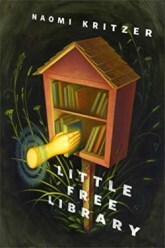 check it out here
check it out here BOOK REVIEW
LITTLE FREE LIBRARY by NAOMI KRITZER December 23, 2021 10:00 am No Comments Facebook Twitter WordPress “To whomever took all the books,In the future, please take just one or two at a time, or consider leaving a book for others to enjoy. For now, I hope you enjoy reading the books you took! Please share them with others when you are done reading!”A Little Free Library by Naomi Kritzer is a beautiful short story that reminds readers that magic can be found in anything. As a reader, I know the magic and power of the written word. Books have power, whether it is to escape, learn, or become enthralled.
And one of the best things a reader can do is share their love for specific books with new readers freely—no strings attached, which is why Little Free Libraries are such a cool concept. You get a kit, a box, a refrigerator… anything that can keep the books out of the rain, and you fill it with your past reads and share it with your community, take a book, leave a book. You have no idea what you will get.
In this story, the narrator and owner of the Little Free Library lovingly builds a box for her front yard and fills it full of her favorites. A little Belgariad, some Lord of the Rings, top it off with some Terry Pratchett.
What does she get back? A little magic, and mystery of course.
This story made me smile so much. We readers are always looking for the bits of magic in the real world because the real world can be so dull. This story shows that it can pop up in the most wondrous of places.
Check Out some of our other reviewsReview – Upright Women Wanted by Sarah Gailey
Review – Riot Baby by Tochi Onyebuchi
December 22, 2021
Review – Raybearer by Jordan Ifueko
 check it out here
check it out here BOOK REVIEW
RAYBEARER JORDAN IFUEKOREVIEW BY FABIENNE FROM LIBRE DRACONIS
December 22, 2021 12:00 pm No Comments Facebook Twitter WordPress “Uniformity is not unity. Silence is not peace.”Raybearer by Jordan Ifueko is probably one of the most unique fantasies to come out in 2020, and despite its Covid-induced delay it is almost ready to be let loose upon the world! I loved that it in no way conformed to the traditions of Western fantasy and is thoroughly grounded in African storytelling and culture.
Jordan is a fantastic writer, and I cannot wait to see where her career takes her – a few months ago, she did a promo thing on Twitter where she asked readers to send in pictures and described them in the Raybearer style, and this is how she described me, I absolutely love it!
Many thanks to HotKey Books for sending me an advance copy of this book in exchange for my honest review!
SUMMARY: Tarisai has always longed for the warmth of a family. She was raised in isolation by a mysterious, often absent mother known only as The Lady. The Lady sends her to the capital of the global empire of Aritsar to compete with other children to be chosen as one of the Crown Prince’s Council of Eleven.
If she’s picked, she’ll be joined with the other Council members through the Ray, a bond deeper than blood. That closeness is irresistible to Tarisai, who has always wanted to belong somewhere. But The Lady has other ideas, including a magical wish that Tarisai is compelled to obey: kill the Crown Prince once she gains his trust.
Tarisai won’t stand by and become someone’s pawn – but is she strong enough to choose a different path for herself? (from HotKey Books)
OPINIONS: There is so much to say about Raybearer, and at the same time, I’m just blubbering and yelling at you to buy this damn book. It is unique, has positive portrayals of asexuality, subverts the chosen one trope, and features some beautiful writing.
My favourite element about this book was probably the world building – looking for a non-problematic new fandom to stan now that you no longer want to associate yourself with a certain wizarding school? No problem, Jordan Ifueko just gave us twelve realms to identify with. There is magic, there is friendship, there is family and there is love of all sorts. Really, there is everything needed in a great YA novel.
The characters are deliciously complex, and Tarisai’s true loyalties are murky until the very end of the book, adding tension to the story. The Lady, the book’s antagonist, is just as faceted and layered, rather than just being some sort of faceless evil.
Nevertheless, kindness overshadows ambition and competition, which is a lovely change from so many YA novels. Despite everything that happens in the story, the bonds of friendship and loyalty do hold the group together and shape the plot.
If reading this has made you want to read Raybearer – I know writing has made me want to reread -, you’re in luck, it is finally out next week! Add it to your Goodreads here, and pre-order from your retailer of choice. Click here for Forbidden Planet, or I know Fairyloot will be doing an awesome special edition with the UK cover on a hardback soon!
CHECK OUT THE ORIGINAL ARTICLE
Check Out some of our other reviewsReview – The Final Girl Support Group by Grady Hendrix
Review – The City of Brass (The Daevabad Trilogy #1) by S.A. Chakraborty
FABIENNE FROM LIBRIS DRACONIS
Hi! I’m Fabienne, the nerd behind Libri Draconis. I have always loved reading more than anything else, and have been reviewing and rating books on Goodreads and Netgalley for a while.
My friends also claim that I am somewhat talented at shoving great books at them, whether they ask for recommendations or not. In that spirit, I decided to branch out into creating a real book blog, and I hope you enjoy reading my opinions. Libri Draconis has been live since August 2018 and keeps growing and enriching my life.
Besides reading, Dungeons and Dragons has taken over our lives in the past couple of years, and I love cooking and swimming in the river – oh, and cats of course. After having been mainly Switzerland-based for two and a half decades, I moved to London in 2019, and I am very excited to be a part of the lively UK bookish community!
In real life, I’m a professional nerd. After a long stint into medieval history, eighteenth-century mathematicians and digital editions I did an MA in Publishing at UCL.
I’m currently freelancing in various areas of publishing and love playing with stories more than anything – my dream is to one day be nominated for a best editor Hugo award. But in the meantime, I’m on the judging panel for the British Fantasy Awards and the Subjective Kinds of Chaos Awards for 2021.
Review – Legendborn By Tracy Deonn
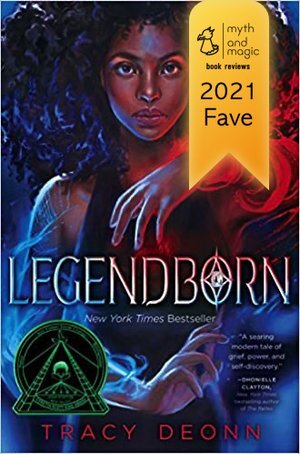 check it out here
check it out here BOOK REVIEW
LEGENDBORN TRACY DEONNREVIEW BY FABIENNE FROM LIBRI DRACONIS
December 22, 2021 10:00 am No Comments Facebook Twitter WordPress The most important thing you can do in this world, the most necessary thing, is to survive it. You can't do anything for anyone else if you don't take care of yourself first.Fabienne’s summer of Arthuriana continues! I’ve been lucky enough to get to read an eARC of the wonderful Legendborn a few weeks ago and I can assure you that it is worth every ounce of hype that it is getting! A thoroughly modern reimagining of the Arthurian legends meets Black girl magic featuring a set of amazing characters – I loved it and I cannot wait to read more! My finished copy is on its way and I will be rereading it as soon as I can.
Massive thanks to Netgalley and Margaret K. McElderry Books for providing me with an advance copy in exchange for my honest thoughts.
As I’m in the process of writing my MA dissertation on modern reinterpretations of medieval mythology and legends, I have read an awful lot of them over the course of the last few months, so please trust me when I tell you that Legendborn truly is one of the very best.
It is diverse, it is feminist, and it is a fantastic YA fantasy on top of exhibiting a deep understanding of the Arthurian corpus and making it its own. It is not merely a retelling of the classic King Arthur story, but it twists it in a way that is surprising and refreshing, mixing it up and turning it into something unique.
Not only that, but it mixes Arthuriana with Black girl magic, of which this world always needs more – Bree is a wonderful heroine, and the way Tracy Deonn manages to weave colonialism and slavery into the story and the Arthurian tradition is truly masterful.
It makes Legendborn multi-faceted and layered – yes, it is a story that can just be read and enjoyed, but there was so much in the various timelines that a history nerd like me saw and got excited about and at the same time many things that people like me, who grew up white in Europe, often tend to forget and overlook because we are not personally confronted with them.
Another thing I absolutely loved about Legendborn is the fact that Bree is a very smart girl. The story is set on a college campus, and she has just entered early college. As someone who graduated High School early and went off to Uni at 16, I am always very excited when I get to read about characters I can identify with in that way – something that is incredibly rare.
I’m not talking about characters that are constantly studying and great at doing homework, but naturally clever, and have a personality that truly enjoys learning and research. Thank you, Tracy, for giving me a book that makes me feel seen and combines it with my passion for medieval legends!
P.S. Legendborn also features two hot boys. There’s Nick, straight-laced cute boy, and Selwyn, resident slightly gothy bad boy… I recommend you add Legendborn on Goodreads ASAP and pre-order yourself a copy so you can decide whose team you’re on! You can get the UK edition via Waterstones here, and the US edition via Book Depository here.
CHECK OUT THE ORIGINAL ARTICLE HERE
Check Out some of our other reviewsReview – The Final Girl Support Group by Grady Hendrix
Review – The City of Brass (The Daevabad Trilogy #1) by S.A. Chakraborty
FABIENNE FROM LIBRI DRACONIS
Hi! I’m Fabienne, the nerd behind Libri Draconis. I have always loved reading more than anything else, and have been reviewing and rating books on Goodreads and Netgalley for a while.
My friends also claim that I am somewhat talented at shoving great books at them, whether they ask for recommendations or not. In that spirit, I decided to branch out into creating a real book blog, and I hope you enjoy reading my opinions. Libri Draconis has been live since August 2018 and keeps growing and enriching my life.
Besides reading, Dungeons and Dragons has taken over our lives in the past couple of years, and I love cooking and swimming in the river – oh, and cats of course. After having been mainly Switzerland-based for two and a half decades, I moved to London in 2019, and I am very excited to be a part of the lively UK bookish community!
In real life, I’m a professional nerd. After a long stint into medieval history, eighteenth-century mathematicians and digital editions I did an MA in Publishing at UCL.
I’m currently freelancing in various areas of publishing and love playing with stories more than anything – my dream is to one day be nominated for a best editor Hugo award. But in the meantime, I’m on the judging panel for the British Fantasy Awards and the Subjective Kinds of Chaos Awards for 2021.



